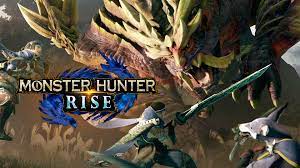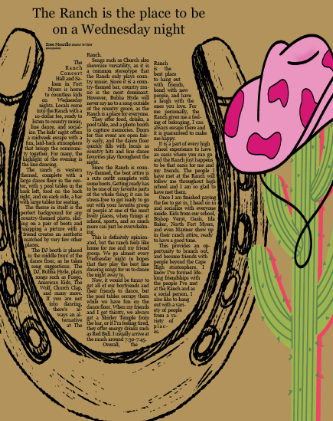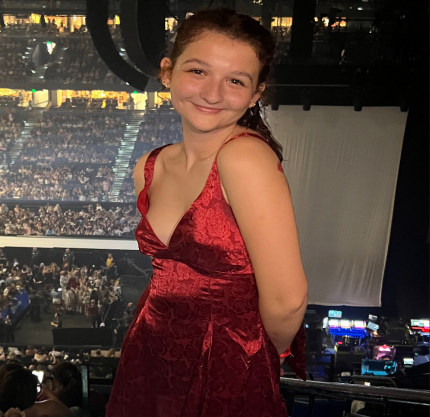Monster Hunter Rise-s To The Occasion

Image taken from the Nintendo website
Being about halfway through 2021, it can safely be said that this year has been quite the year for video games, with the release of fantastically fun games such as Hitman 3, Resident Evil Village, and case and point, Monster Hunter Rise.
Monster Hunter Rise is the latest game in the Monster Hunter series, released on March 26, 2021 and made by Capcom. It’s currently a Nintendo Switch exclusive with plans for a PC port in early 2022. The game itself was made for its fans and it delivers the expectations and more to come.
In the village of Kamura, lies an unknown event called the Rampage, an event where hordes of monsters approach the village gates and attempt to break through. The players’ goal in MHR is to fend off the Rampages while also discovering the truth behind it. This is done through two different campaigns: A single player quest line (Village Quest) and a multiplayer quest line (Hub Quest). As of now, only the Village Quest has an ending.
As Kamura is a small village, they are a close knit community of recognizable faces. The two people you’ll be talking to the most however are twin Wyverians; Hinoa and Minoto, the quest givers for their respective quest line.
Then there’s the two main hunters of the village, Elder Fugen and Master Utsushi. Elder Fugen is the strongest hunter in Kamura village and has experience with the Rampage, and aids the player with special enhancement items. Utsushi is the player’s trainer who taught them the basics of all the weapons and started the player on their journey to be a hunter.
While in the map where the main gameplay is, the new editions of Rise really show their strengths. The big change in this game are the Wirebugs, versatile assets that allow for exploration unseen in past games. With a single use you can reach farther distances much faster than being on foot, and they even have their combat uses too.
Ahhh, the combat system, the bread and butter of any game with it, is crafted very well in Rise. With a focus on multiplayer groups, synergy is key to a successful hunt, especially once the higher rank quests get unlocked.
That synergy comes from the multitude of weapon classes and the different ways to play them. In total, there are 14 classes that can be put into two main categories: Sharpening weapons, and non sharpening weapons. Most melee weapons are in this category, because there’s a sharpness bar which tells how much additional damage you can do to monsters depending on the level of sharpness. The ranged weapons don’t use sharpness, but rather different kinds of ammunition to do damage to weapons. Why aren’t the categories Sharpness and Ammo? That’s because some sharpness weapons blend ammo into them (cough cough, Gun Lance)
Of course if you want to play a support role, you can use the paradoxical Hunting Horn, which has a sharpness bar for some reason.
The titular monsters that players hunt come in many sorts of shapes and sizes. Usually big sizes, with powerful elemental attacks. At first, you fight weaker monsters to get a handle of the game, but sooner rather than later, you’re thrown towards monsters that can practically control nature around you and cause you to curse Charles Darwin and everything he stood for.
Some people harp on the graphics, which is an understandable issue. The Switch isn’t as powerful as the Playstation 4 or most Gaming PCs so it’s to be expected that it can’t compete, graphics wise to Monster Hunter World and the likes. However, it’s charm lies in its stabilization of Monster Hunter and not it’s hyper realistic graphics.
But one of the highlights of the game (for me at least) is the music. Some monsters have custom themes that have made me jaw drop at their composition. Capcom knew what they were doing using traditional japanese rhythms with more modern instruments to make a truly unique soundtrack that stands out against other MH games.
What does make Rise similar to other MH games however, are the monthly updates for the first year of the game that bring in new and old monsters and additional content that might contradict info in this review. Example: Before Version 2.0, character customization after character creation could be done for free at any time, however now you need to buy (with real money) a ticket to change your character’s looks. Even so, all this new content will keep the game relevant for much longer than usual games with just their initial launch content.
As of this article’s creation, the third main update has not come out yet. This update promises the ending for the Hub storyline that has been missing since the game’s launch. Many people are excited to see how this game reaches its conclusion and what lies next for the hunters of Kamura.
Your donation will support the student journalists of Cape Coral High School. Your contribution will allow us to purchase equipment and cover our annual website hosting costs.

Instagram: sweetandsourdragon
Hello! I’m Victor. I like to play video games and watch anime. Most of my articles are about that. Hope you like my...






